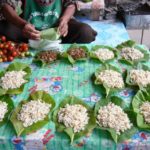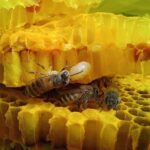Pla Ra (Thai: ปลาร้า, pronounced [plāː ráː]), is fermented fish. Traditionally, Thais in the Central and Northeast provinces (Isan) eat fish and rice. In these relatively poor provinces, there is only one rice growing cycle every year. The planting season starts in May, and by the end of June, it is over. After planting, the rice fields are stocked with fish fingerlings. The growing season follows from July to November, and rice and fish are harvested in December.
Rice can be dried and stored easily, whereas fish have to be preserved. Farmers converted all suitable land into rice farming. Therefore, only restricted space was left for fish, which could be caught wild and outside the rice farming cycle. Thus, fish preservation was necessary. The best products are strong-smelling or strong-tasting fish products, where a small amount could flavor lots of rice. This led to the production of fish sauce and fermented fish of Pla Ra.
Which fish species are used for preparing Pla Ra?
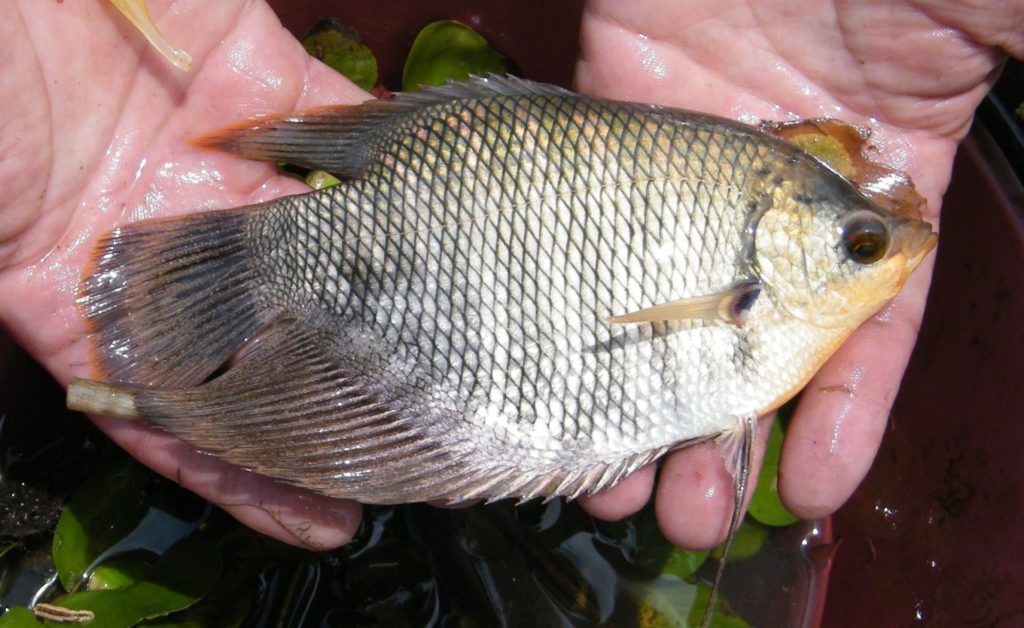
Fish species used for making Pla Ra differ from the location. In Central provinces, mainly Walking catfish (Clarias batrachus; Pla Sawai) or Stripped snakehead (Channa striata; Pla Chon) are used. They will be mixed with roasted broken rice or rice powder. In North-East provinces, Giant Gourami, Mud carp, Nile tilapia, and other fish with white and soft meat are used. In these areas, together with rice bran.


There is also a third general type of Pla Ra, called Pla Ra Sot (Fresh Pla Ra). This uses small white meat fish in combination with cooked rice or rice bran. The fermenting time of Pla Ra Sot is only a few weeks.
Different types of Pla Ra
At least three different types of Pla Ra sauce are produced in Thailand. Pla Ra with snakehead from the Central provinces is yellow with soft fish meat and a less intensive smell. Pla Ra with Giant Gourami from Isan is often dark and has an intense aroma. Pla Ra Sot is salty and has a bit of a sour taste from lactic acid. There are also a variety of fermented fish sauces with chilies now on the market, which are produced industrially.
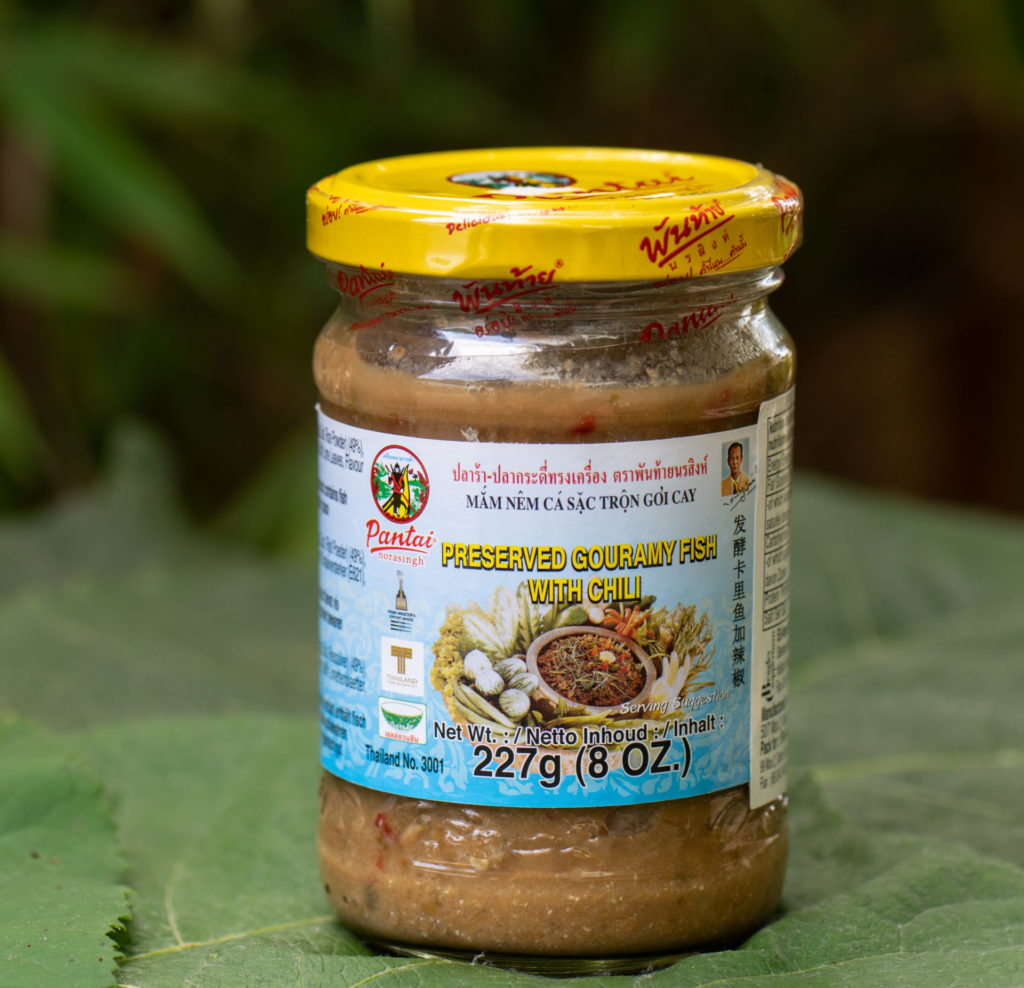
How to produce Pla Ra in Isan province
To avoid confusing the different types of Pla Ra, we will only describe typical Pla Ra production in the Isan area.
As mentioned, white meat fish (Giant Gourami, mud carp, Tilapia, and others) of various sizes will be used. They are, on average, between 15 and 30 cm long and will be washed, descaled, and all fins removed. After that, the head will be cut off behind the gill cover, and the fish will be gutted. Afterward, the fish body is cut into 10 cm wide chunks. The inner body cavities of these fish chunks have to be cleaned. This must be done so that no kidney parts remain around the spine. And – all dark skin inside the cavity is completely removed. The kidney, its parts, and dark skin will give an unpleasant smell after fermentation.
After proper cleaning, the fish parts are mixed with lots of rock salt, which was crushed in a mortar before. These salted chunks are now pressed by hand so water can rinse off and stacked in an earthen pot. They should be compressed by hand so that they are tightly stacked. All remaining rock salt and brine are put onto the fish stack until completely covered. This pot is left in an open, shady place covered by an earthen lid.
Further processing and fermentation
About one week later, all fish pieces are removed from the pot. They are slightly pressed by hand, and the pot is cleaned with water. Then, they are salted again and liberally dusted with rice bran, which improves fermentation and adds the typical aroma. The pot is covered again and left alone for as long as the farmer finds fit for his taste.
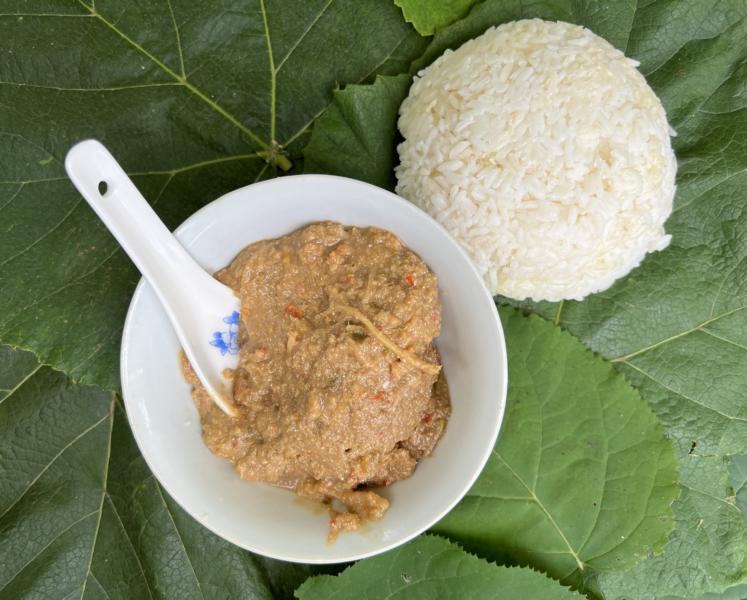
The minimum fermentation time is one week for light aromas, which restaurants prefer. But this can be extended to up to one year for a pungent smell. Such dark Pla Ra sauce is the right choice for the connoisseur of hard-sotten fermented fish. Most Pla Ra makers prefer a fermentation period between 3-5 months.
But for this period, the bacteria content is the highest, which means the sauce is quite lively. Pla Ra should, therefore, always be heated above cooking temperature to kill off these microorganisms. Halophilic bacteria play an important role in the taste and aroma of the sauce. If Pla Ra is used uncooked in food, this food can easily be contaminated by various bacteria.
Lessons learned from Pla Ra
- Traditional wet preservation methods of fish in tropical countries were once necessary for the population’s well-being.
- Nowadays, they are replaced by preservation methods, which are often combinations of mechanical and chemical methods—and they taste better.
- Many local people in upcountry provinces of Thailand are still addicted to the taste and aroma of fermented fish. That’s the best proof that the concept of ‘acquired taste’ really works.
.


